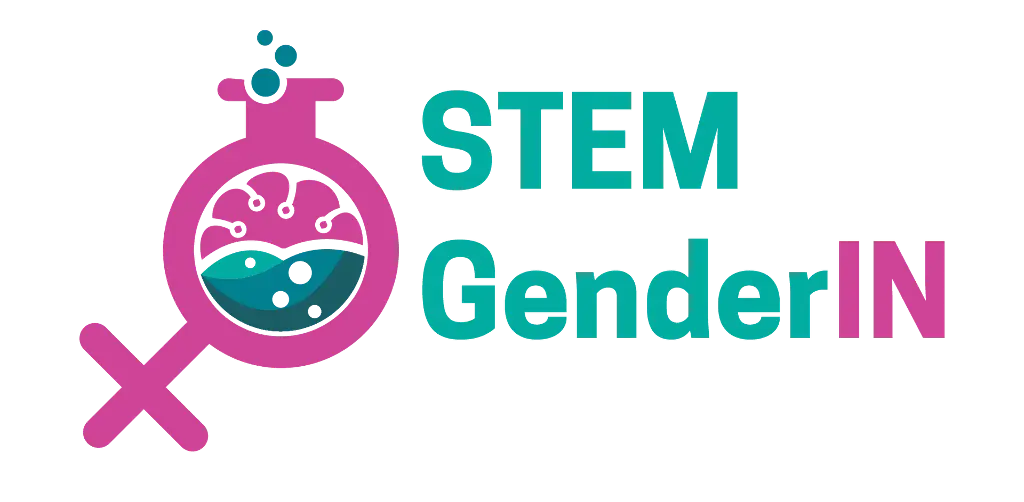How to Apply Inclusive Language in Teaching
How to Apply Inclusive Language in Teaching
Applying inclusive and gender-neutral language in the classroom is not just about changing individual words or phrases; it’s about fostering an environment where all students feel respected, valued, and included. This requires intentional strategies, practices, and resources that teachers can use daily. Below are some concrete ways teachers can apply these principles in their teaching, lesson planning, and classroom management.
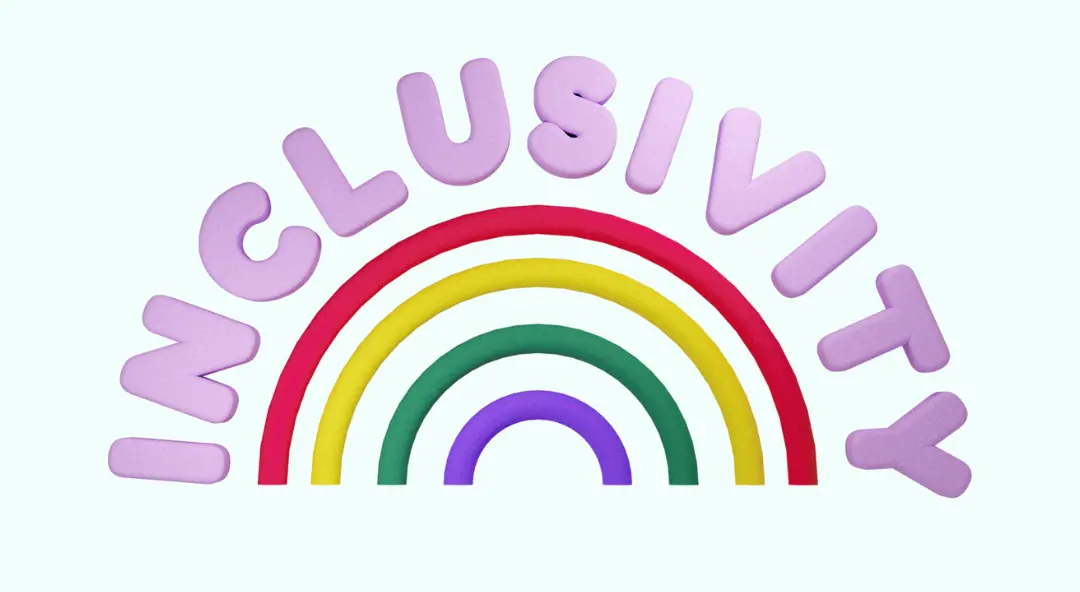
1. Establishing ground rules for respectful communication
The first step in creating an inclusive classroom is to set expectations for respectful communication. At the beginning of the school year or course, teachers should establish clear guidelines for the use of inclusive language and respect for diverse identities. This can be done through classroom discussions, agreements, or even a formal code of conduct that students help to create.
What you can do:
- Create an inclusive language policy: Collaborate with students to define what inclusive language means in your classroom. Include points about avoiding assumptions based on gender, race, or background, and emphasize the importance of using preferred names and pronouns.
- Encourage students to share their pronouns: Create a space where students feel comfortable sharing their preferred pronouns, but ensure that this is voluntary. A simple activity could involve introducing themselves with their names and pronouns on the first day (e.g., “My name is Jamie, and I use she/her pronouns”).
- Model inclusive language: As the teacher, consistently model inclusive and gender-neutral language in your instructions, examples, and conversations. This sets the standard for how students should interact with each other.
Example: Instead of saying “Let’s get started, boys and girls,” say “Let’s get started, everyone,” or “students”.
Classroom poster idea: Create a visual reminder that lists inclusive language tips, such as using gender-neutral terms like “firefighter” instead of “fireman,” and encouraging the use of “folks” or “students” instead of “guys”.
2. Creating inclusive lesson plans
Inclusive language should be embedded into lesson planning and the materials teachers use. This goes beyond simple word choice and requires a reflection on whether classroom examples, stories, and case studies represent diverse perspectives and identities. Ensure that lessons do not reinforce stereotypes and that all students can see themselves reflected in the material.
What you can do:
- Use gender-neutral examples: When giving examples in class, avoid defaulting to male or female characters unless it’s necessary. Instead, use names and pronouns that reflect a wide range of identities (e.g., “Taylor went to the market” rather than “He went to the market”). This normalizes the use of diverse gender expressions and experiences.
- Check teaching materials for bias: Review textbooks, reading materials, and other resources to identify any biased language or gendered assumptions. Replace these with more neutral or inclusive alternatives.
- Highlight diverse contributions: Include examples of people from different genders, cultures, and backgrounds in your lessons. For instance, when discussing historical figures, scientists, or writers, include women, non-binary people, and individuals from diverse racial and ethnic backgrounds.
- Avoid reinforcing gender roles: When designing group work or classroom roles, be mindful of avoiding traditional gender roles. For instance, don’t always assign boys to technical tasks and girls to organizational or caregiving roles. Distribute roles and responsibilities equally.
Example: Instead of using only male scientists in a physics lesson, include contributions from female and non-binary scientists, such as Dr. Ben Barres (a prominent transgender neurobiologist).
Classroom activity: Create a bulletin board or classroom display that showcases the achievements of people from different genders, cultures, and backgrounds across subjects like science, literature, and the arts.
3. Promote classroom discussions on inclusivity
One of the most powerful ways to engage students with inclusive language is to involve them in discussions around the topic. These discussions help students become more aware of the importance of language and how it impacts individuals and groups. It also creates a space where students can reflect on their use of language and how they can contribute to a more inclusive environment.
What you can do:
- Create a safe space for dialogue: Open the classroom for discussions on inclusivity and identity, where students can express their thoughts and ask questions. Frame these conversations encouraging empathy and understanding rather than judgment.
- Use role-playing activities: Design scenarios where students can practice using inclusive language in real-world situations, such as correcting someone respectfully when they misgender someone.
- Challenge stereotypes in discussions: When discussing themes in literature, history, or social studies, encourage students to question gender norms or stereotypes. Use these discussions to explore how language can reinforce or challenge these ideas.
- Address microaggressions: Teach students about microaggressions - small, often unintentional, comments or actions that can be harmful or exclusive. Help students recognize these in everyday interactions and offer strategies for addressing them respectfully.
Classroom idea: Organize a debate or discussion on the impact of gendered language in media or society. Assign groups to research and present different perspectives, fostering critical thinking and awareness about how language shapes our views of gender and identity.
4. Inclusive group work and collaboration
Group work is a key part of many classrooms, and it's important to ensure that collaborative activities are inclusive. This involves creating groups that reflect diverse perspectives and ensuring that everyone’s voice is heard. Avoid grouping students based on gender or making assumptions about their preferences or abilities.
What you can do:
- Randomize group assignments: Avoid grouping students by gender or making assumptions about who might work well together based on gender or appearance. Instead, mix up groups to encourage collaboration among diverse students.
- Assign diverse leadership roles: Ensure that leadership roles in group work are rotated and not dominated by certain students based on gender stereotypes (e.g., boys as leaders, girls as note-takers).
- Encourage equitable participation: During group work, encourage all students to participate equally. This may require actively facilitating conversations to ensure that no one is being excluded or marginalized.
Tips: Use a "group role" chart that encourages rotation of tasks and responsibilities among all students, ensuring equitable participation and avoiding any gendered assignments of roles.
5. Tips for addressing resistance to inclusive and gender-neutral language
Introducing inclusive and gender-neutral language may face some resistance from students, parents, or colleagues who are unfamiliar with the concept or hold traditional views.
Here are some strategies to address potential concerns effectively:
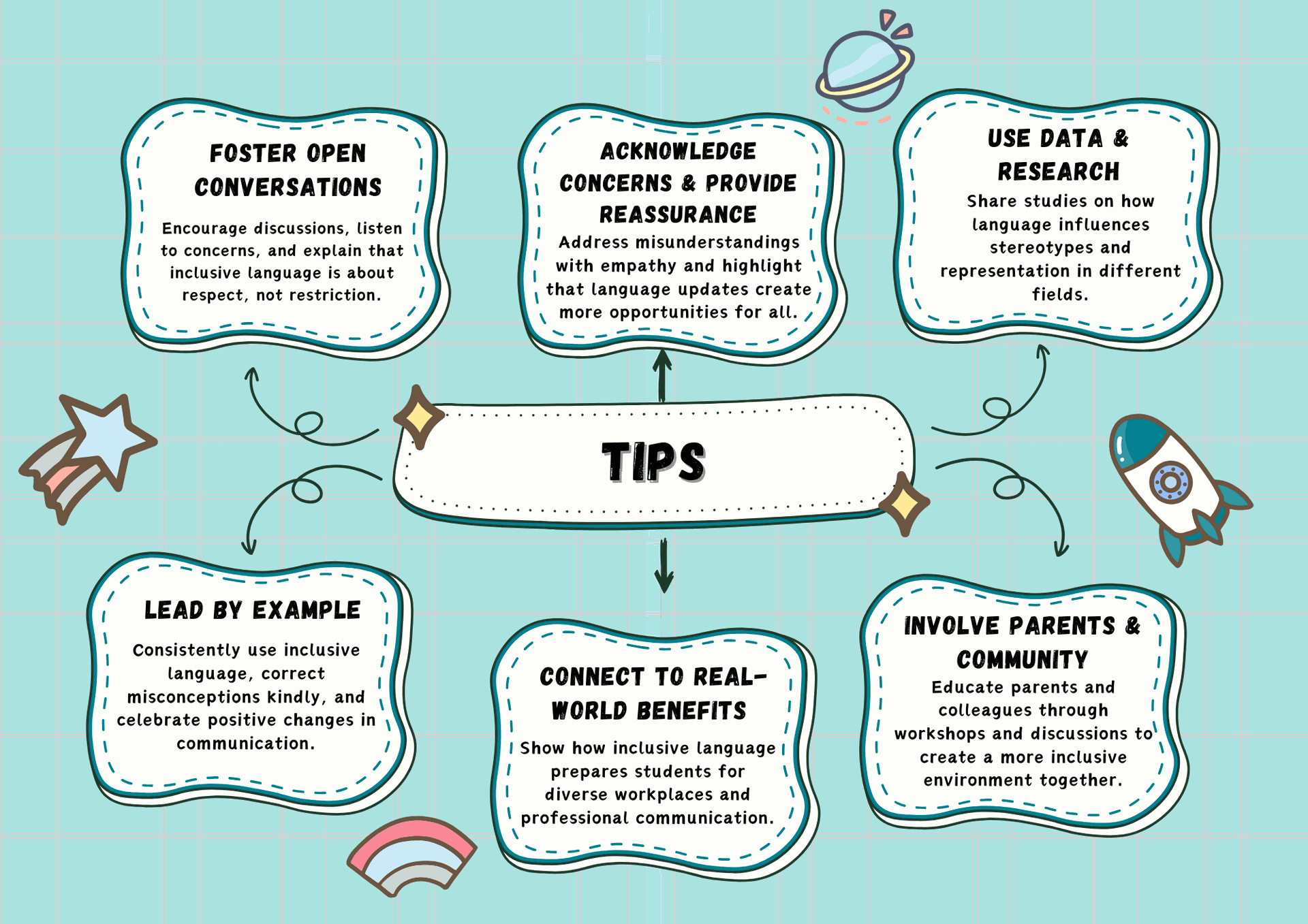
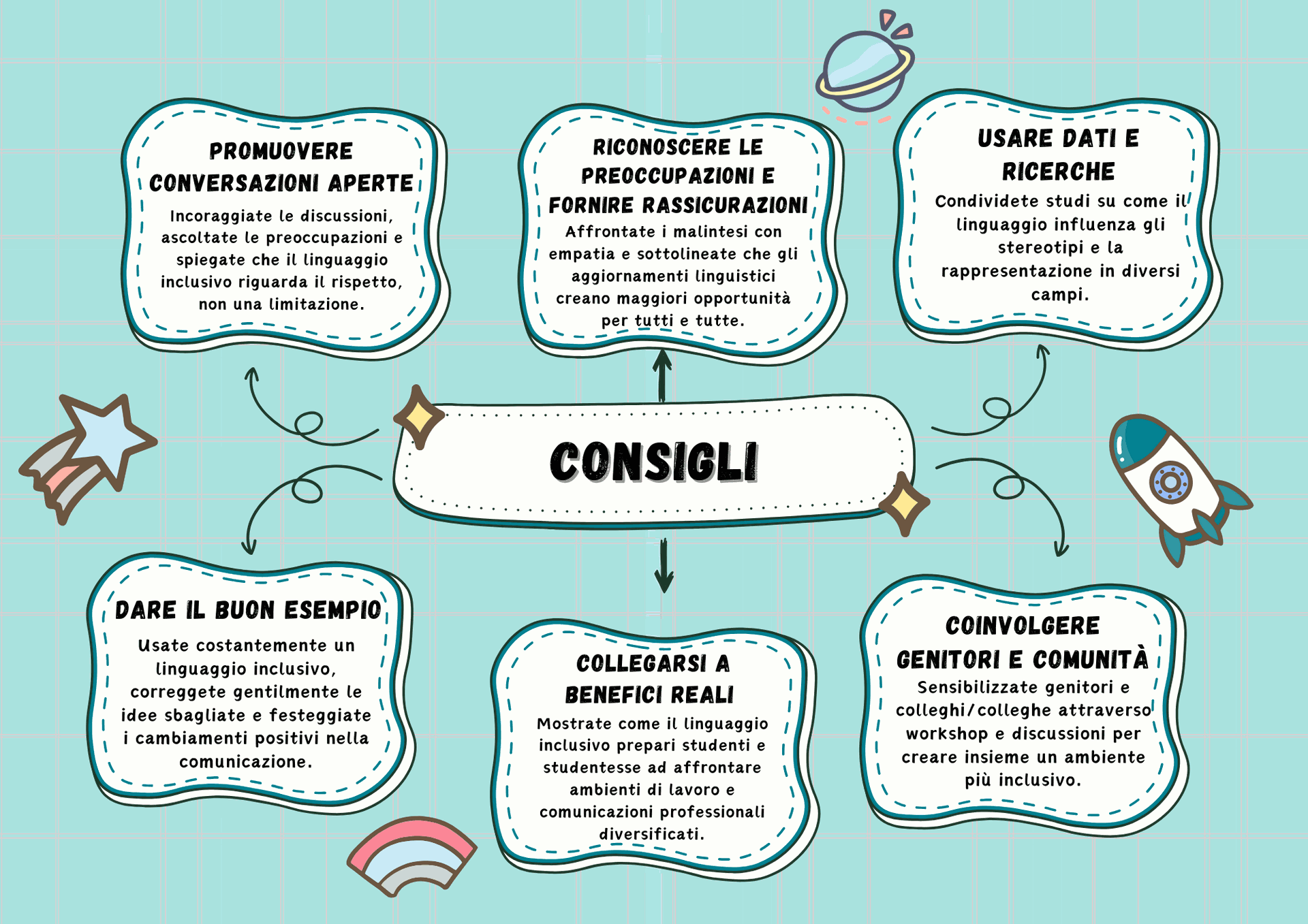
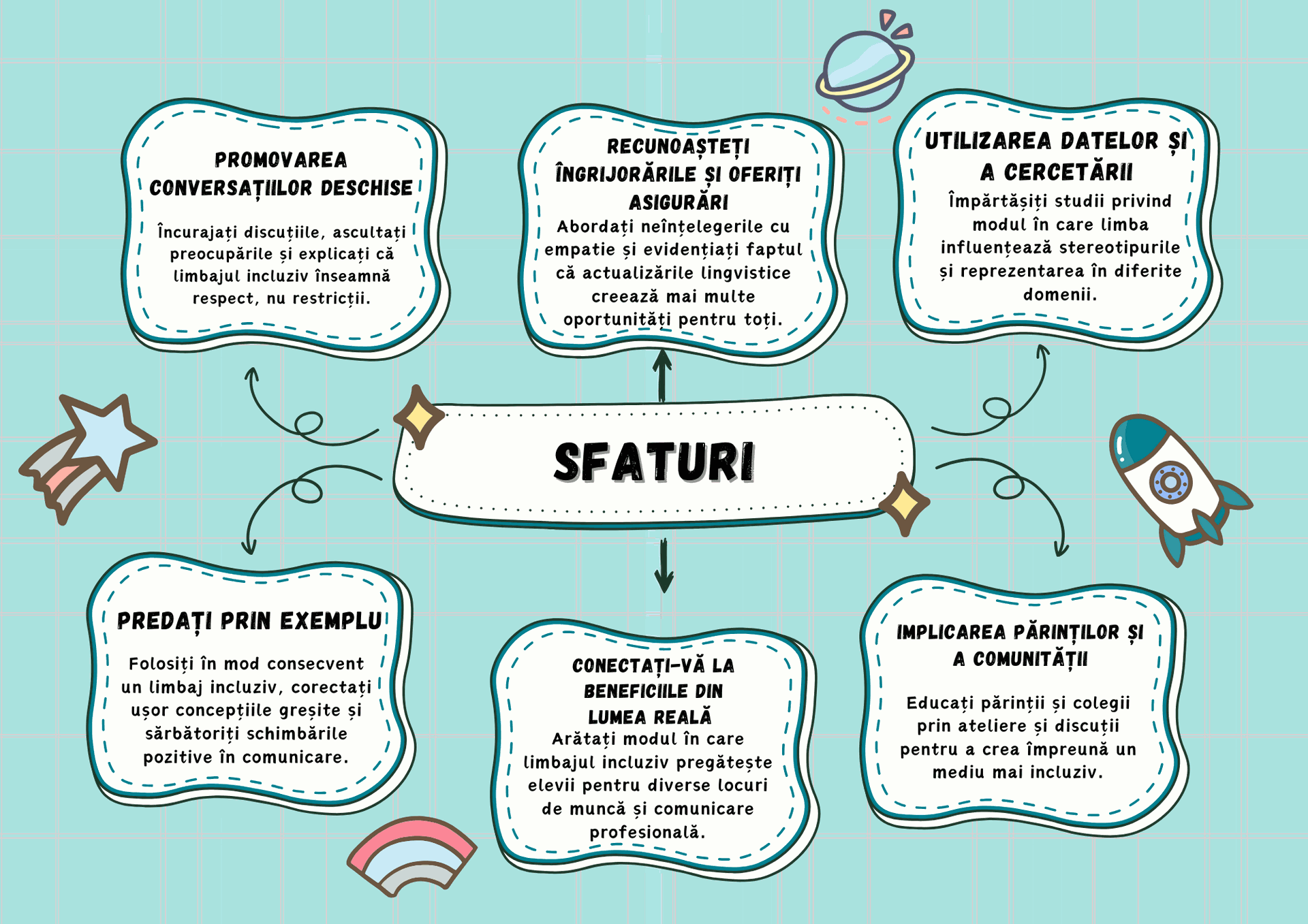
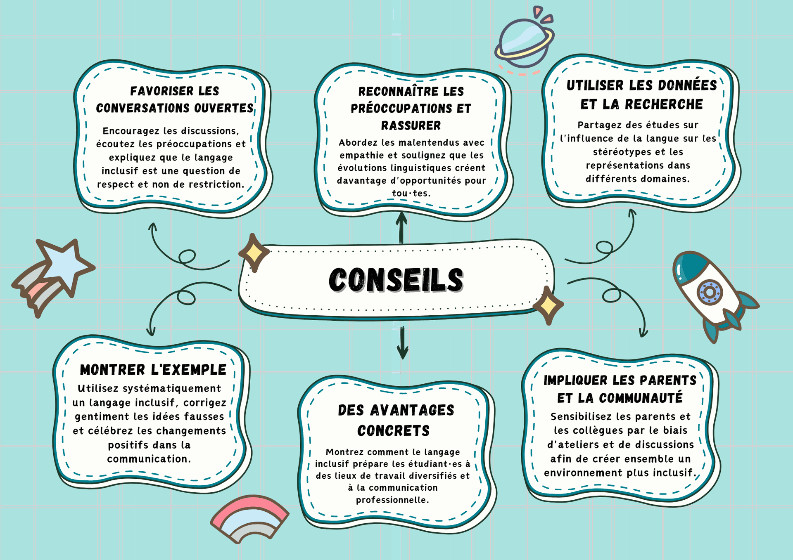
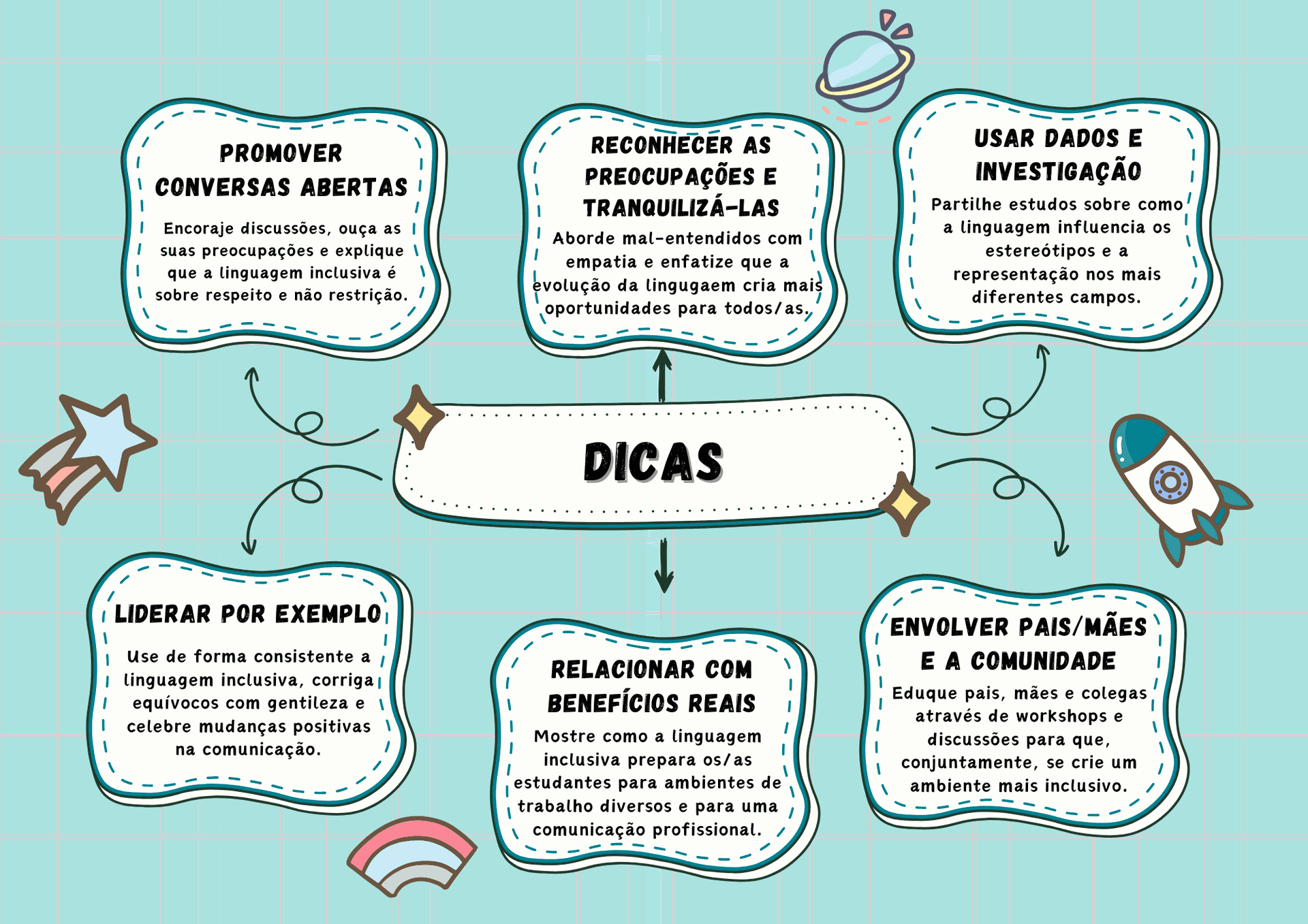
Remember: In an inclusive classroom, students should feel free to express their identity without fear of judgment or exclusion. Teachers play a crucial role in supporting this, so use language that validates and affirms students' diverse identities!
There are no comments for now.
